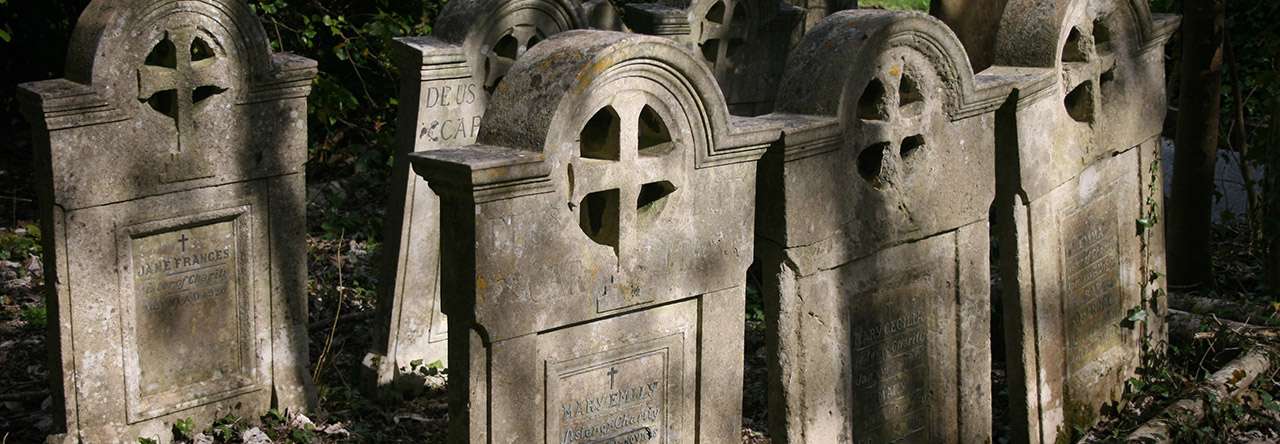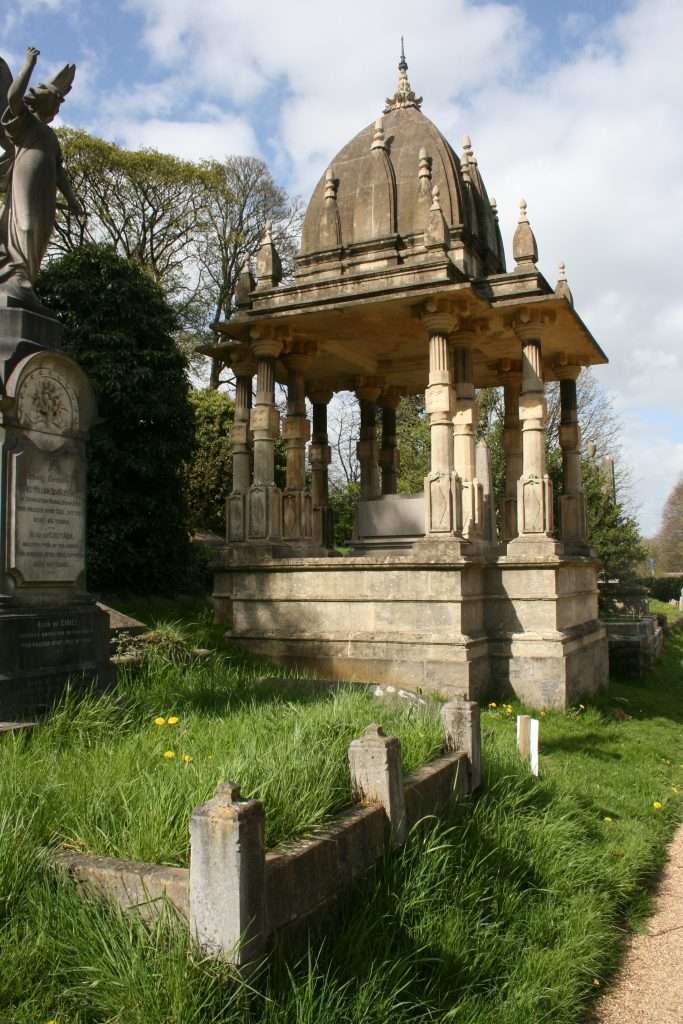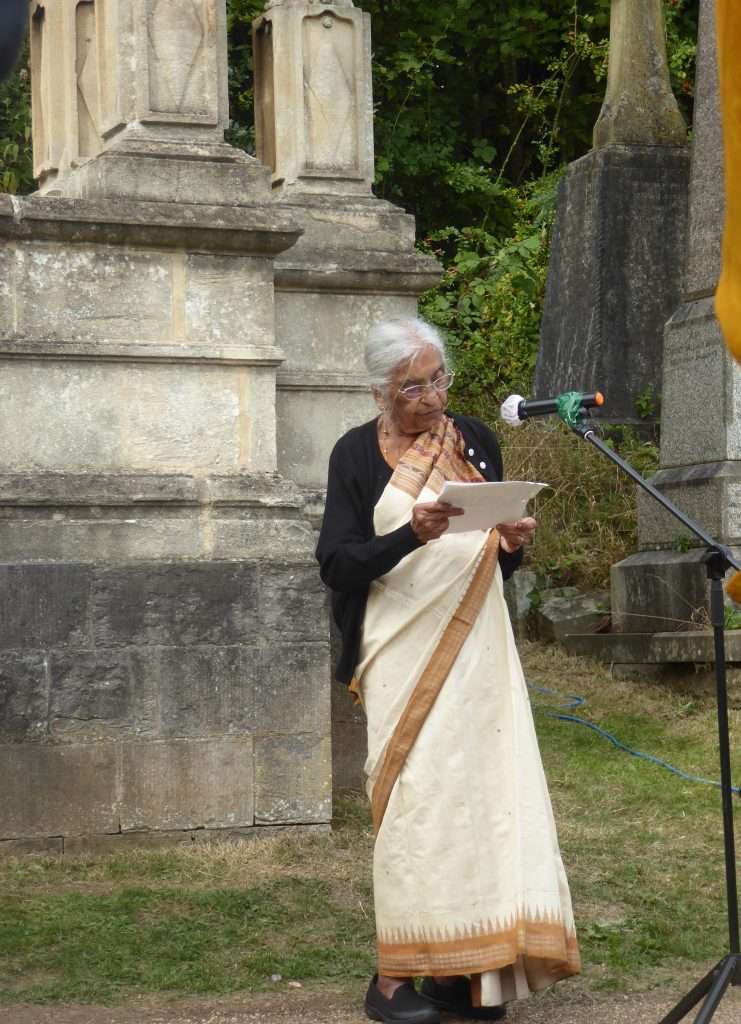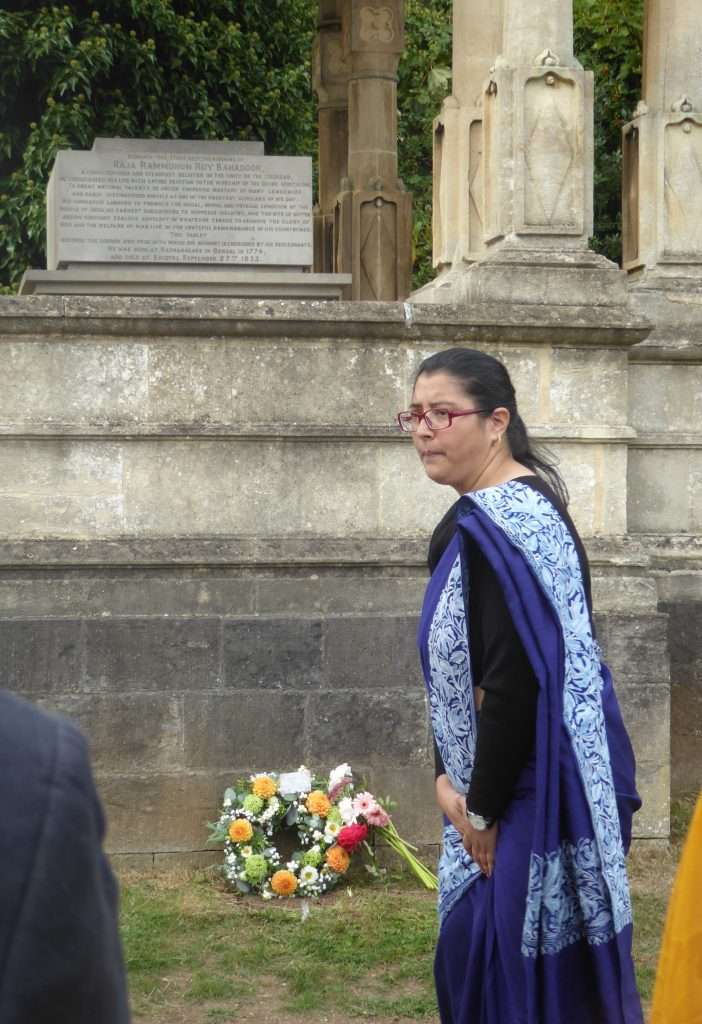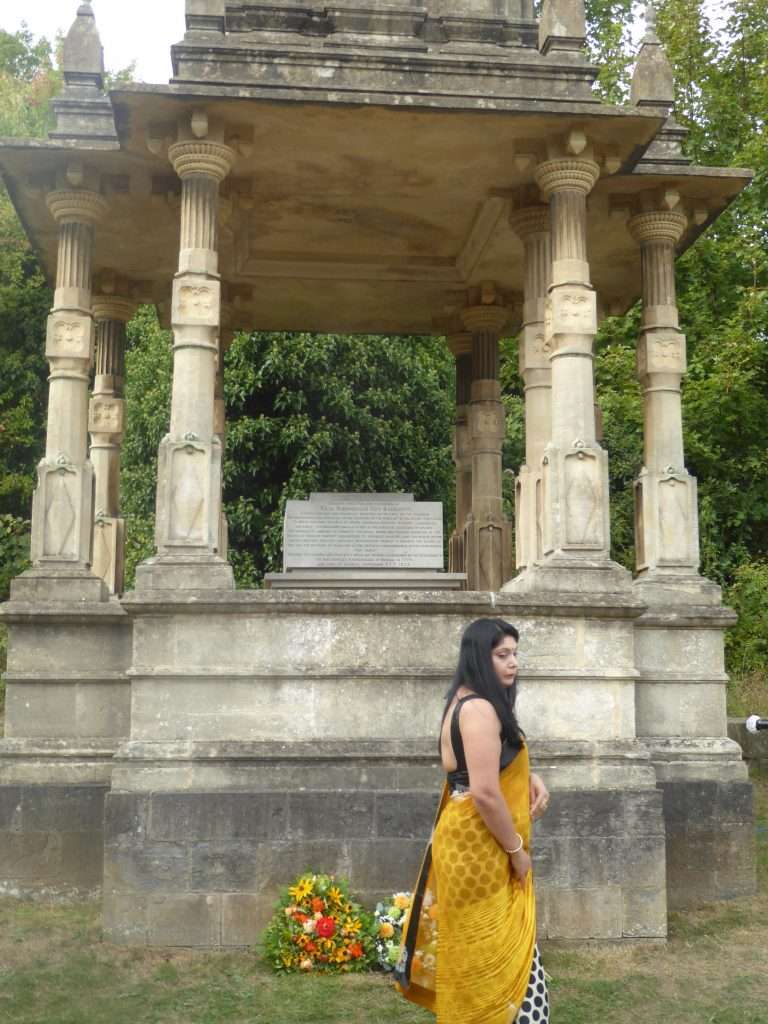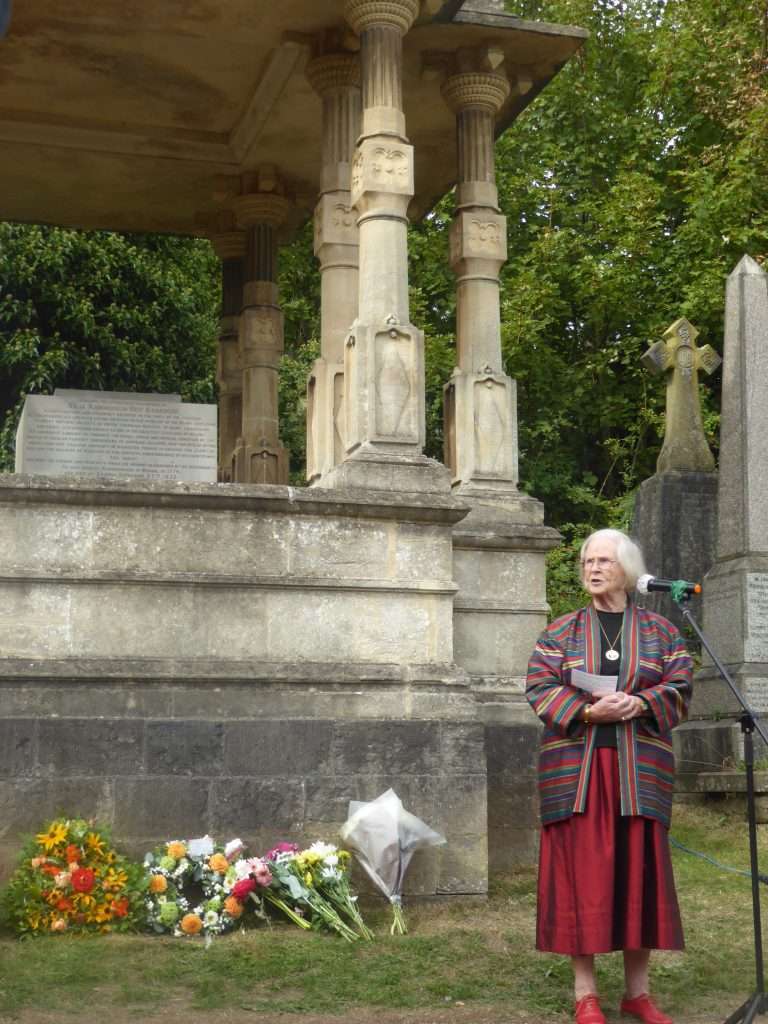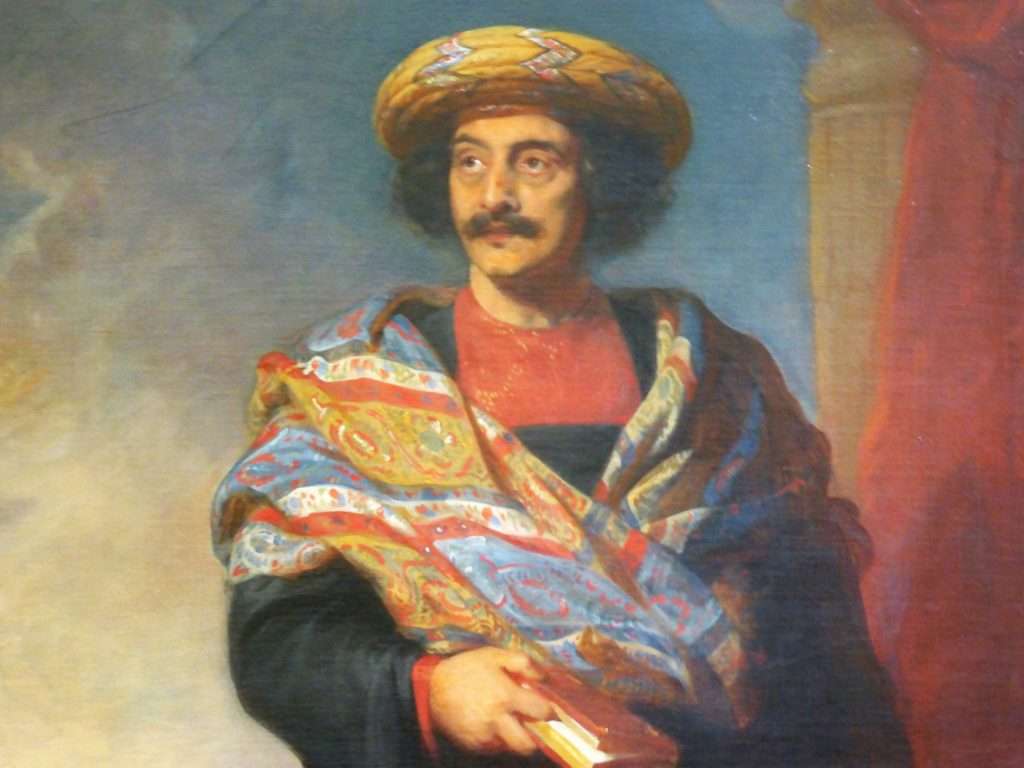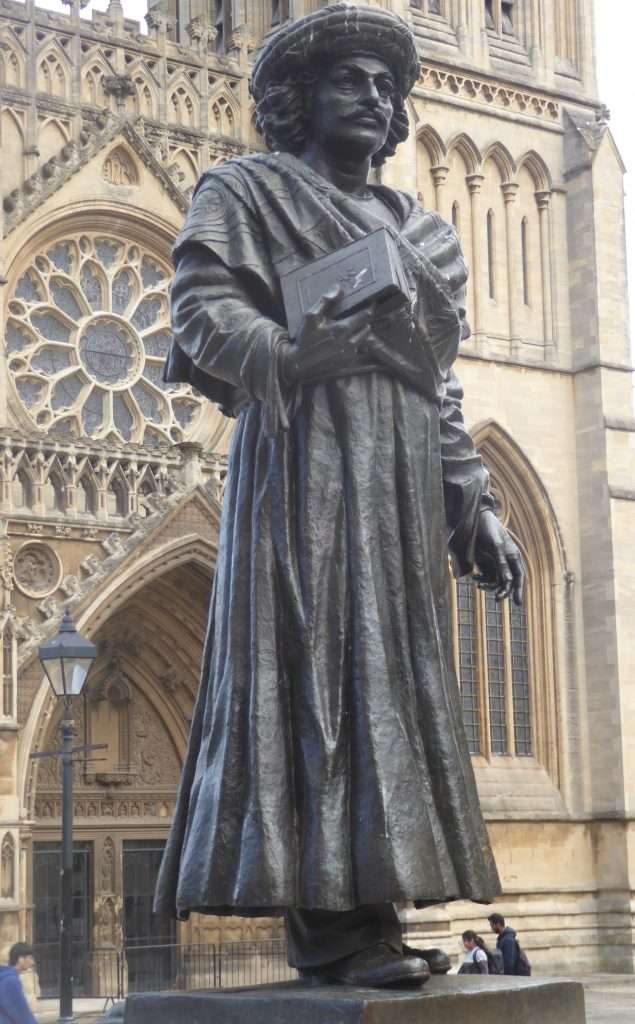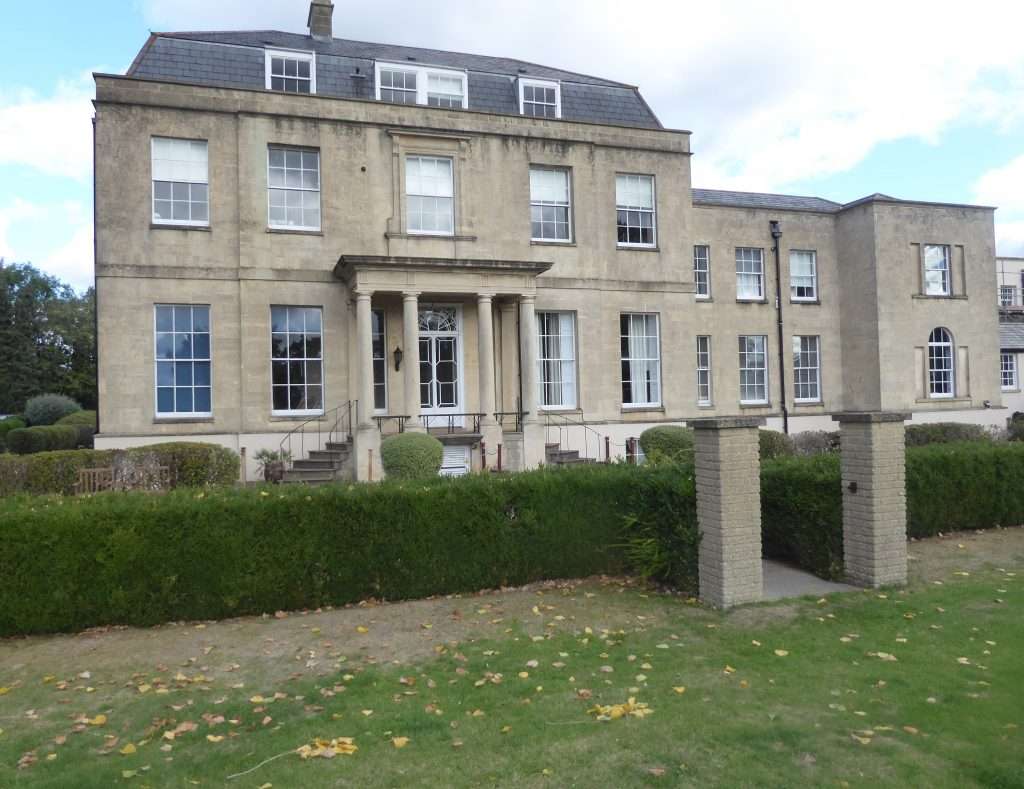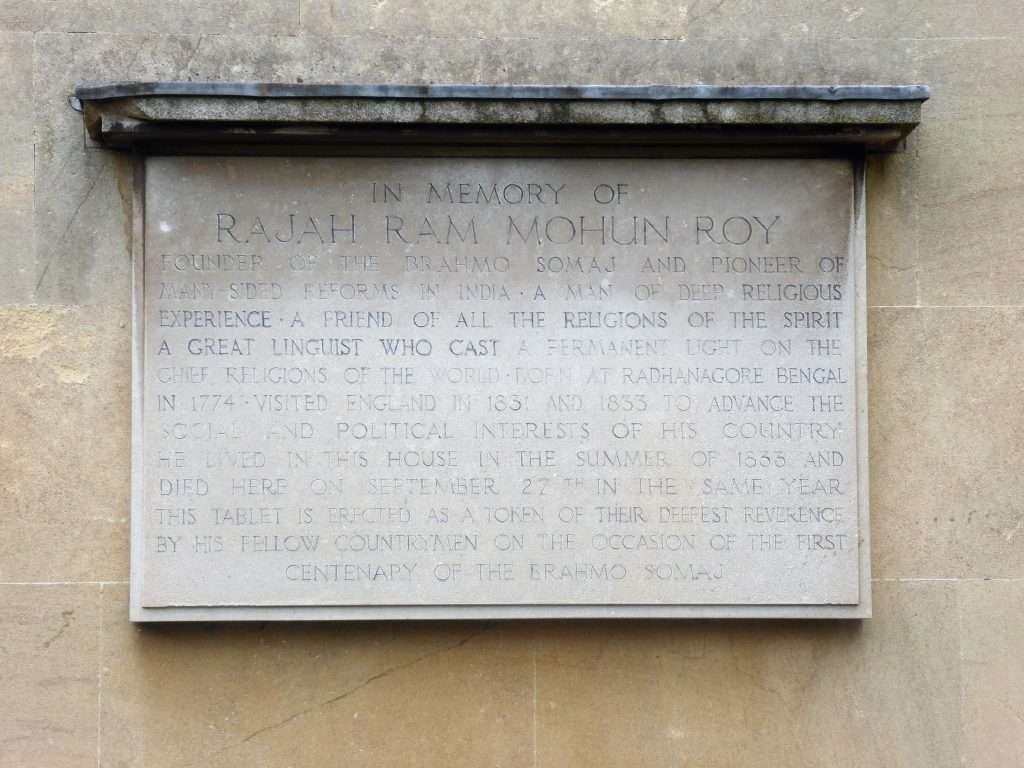In Putney Vale Cemetery in London there is a gravestone flanked by palm trees, topped by a scallop shell and where dolphins swim above the faded inscription:
Roy Plomley OBE
Who created
Desert Island Discs
Born 20th January 1914
Died 28th May 1985

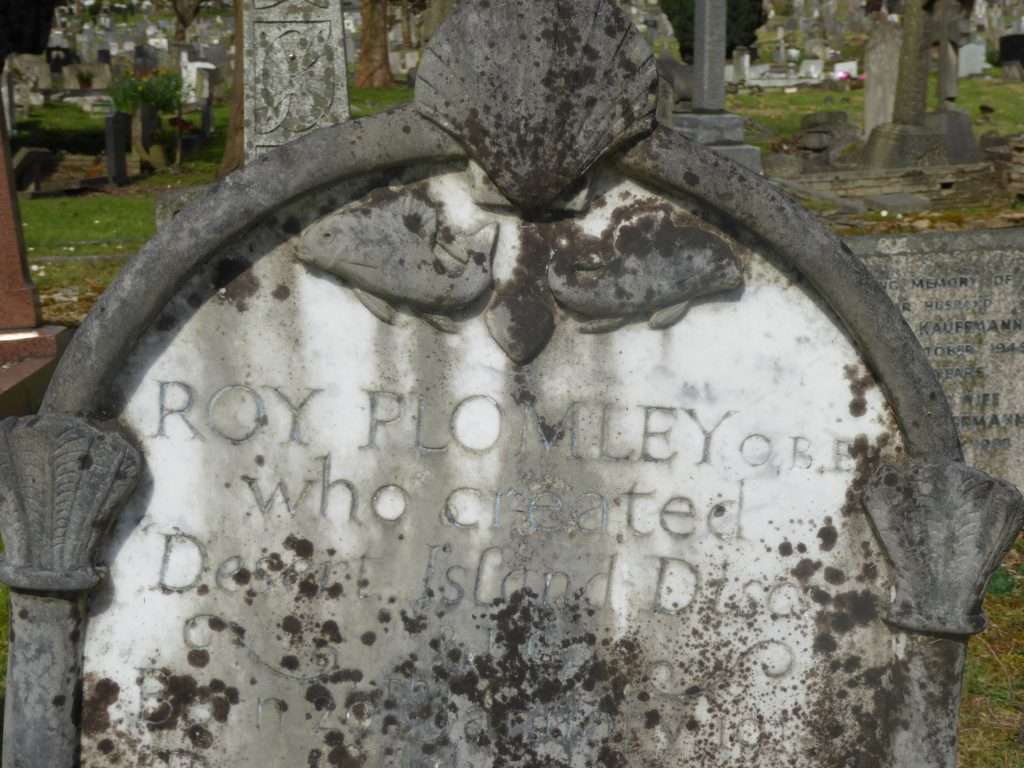
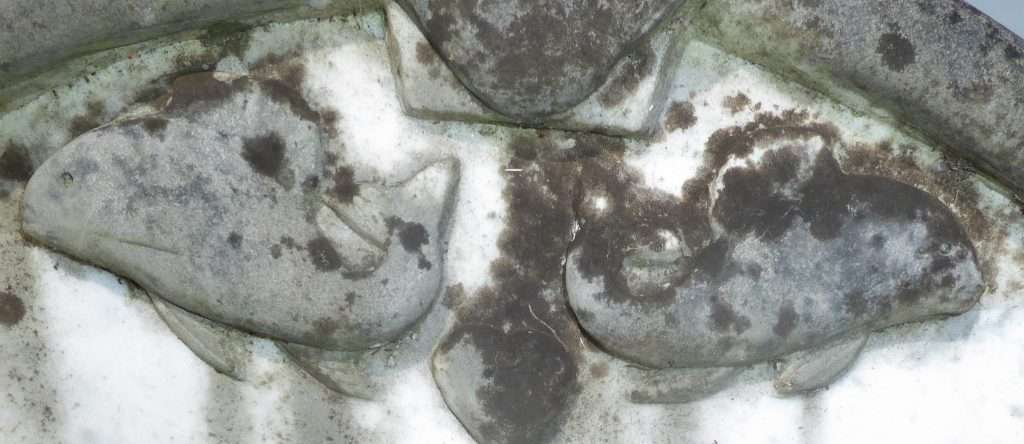
Desert Island Discs began in 1942. The theme tune, Eric Coates’ By The Sleepy Lagoon, drifted out of the wireless, followed by the sound of surf breaking on the shore and the cry of herring gulls. The format was simple: each week Roy Plomley interviewed a notable person about their life and views, the talk interspersed with their choice of the eight pieces of music which they would take with them if cast away upon the eponymous desert island.
Plomley created the programme and presented it every week until his death in 1985. Subsequently four other presenters have taken his place. This year marked the eightieth anniversary of the programme, and it is the second longest running radio show in the world. I doubt if there is anyone in Britain who has never tuned in, curious about the musical tastes of the esteemed and the execrable, as fascinated by the meretricious as by the meritorious.
In an interview with John Dunn, Plomley explained that few people ever refused to take part in the programme: why would anyone, he asked, when
“ you get invited out to a very good lunch…and then you play your favourite music…and talk about yourself…and on your way out you get a cheque.”
While most of us will never be offered the lunch or the cheque, I defy anyone hearing the programme not to muse upon their own selection of eight discs.
And yes, here are mine…
It is the summer of 1969. I am in Montauban on a French exchange, designed to improve my command of the language before the A-level exam next year. I am in possession of a pale blue mini dress with pearl buttons, silver sandals with glitter, and my exchange, Françoise, and I are listening to Georges Moustaki singing Le Métèque. We are mesmerised by the photograph on the record cover: a man with dark eyes, olive skin, long hair, and an already greying beard. The words of the song hold us spellbound; his is a world of exotic destinations, he is a free spirit, a man of passion and poetry, romance and sophistication, of Experience. We are enthralled by this heady mix. We are seventeen and want to be “ the sweet captive” of this man who will “drink of our youth” (it loses something in translation.). We are avid for “a whole eternity of love.” We have powerful imaginations but No Experience – but fervently hope to remedy this soon.
Four years on and another set of examinations is punctuating my life. In the last weeks before Finals, the files and heavily annotated and underscored notes are piled up on my desk, and I emerge from my room only for meals. I am not alone in this and a heavy , unnatural pall of silence hangs in the corridor. Periodically the stillness is riven by Lou Reed’s Transformer emanating from my neighbour’s room. Whichever tracks he chooses he always sets the needle back on to Perfect Day for the finale. With any other record this would be irritating but Perfect Day just makes me smile, push aside the books for a moment and daydream.
Even today it transports me back, not just to those final weeks but to the whole heady experience of three years of freedom without responsibility, of new discoveries and delights. Coming from a worthy but dull girls’ school where work was set for the sake of it rather than to open new horizons, I had arrived at university with other things on my mind than a serious commitment to study. That had changed under the influence of my tutor, Peter Reddaway, and Maurice Cranston who taught me Political Philosophy. Suddenly learning was exciting and I devoured all that my erudite teachers had to offer.
And beyond the library was a social life and the sheer ridiculous fun of living in hall with two hundred other students. Passfield Hall was the first hall in London to go co-ed and this gave it a certain caché. Others less privileged would query in awe the goings on there. In truth the regular sighting of one’s fellow students scuttling to the communal bathrooms in their pyjamas, or bleary eyed and unshaven over breakfast, was not conducive to passion, but we always managed to field questions with knowing looks implying that Sodom and Gomorrah paled into insignificance beside Passfield.
These were the years of my first lover and my first heartbreak, and months of a tear-stained pillow. Was the experience worth it? Of course it was.
A more sophisticated friend introduced me to London beyond the university: to The Marquee and Sunday nights at The Roundhouse. There I learned to roll a joint and, unlike Bill Clinton, I did inhale.
Perfect Days indeed.
I am in my twenties and living in Athens with a Greek boyfriend. We are in love but not good at the day-to-day business of living together. We argue a lot and when angry we know how to hurt each other. I pack my suitcases and come home, but a few months later I am back. We fall into a pattern of quarrels and reconciliations. Sometimes everything is perfect, and the world is a magical place, at others we make each other wretched. It ended badly, but Manos Hadjidakis’ Fifteen Vespers will forever transport me back to an idyll on Serifos, to warm summer nights, the sound of the waves, the scent of jasmine, and the taste of Karelia cigarettes. And with the passing of the years the bad memories fade, while the good ones grow more luminous.
It is New Year’s Eve, sometime in the 1980s, and I am in a bar in Havana, absently wondering whatever happened to the red and black poster of Che Guevara which once adorned my bedroom wall. Suddenly a group of Italians spring to their feet, and erupt, with a perfect command of words and tune, into a rendering of Carlos Puebla’s Hasta Siempre Comandante. They follow this with an emotional Bella Ciao. Then they embrace everyone and wish them a Happy New Year. But it is 6pm. Understanding dawns: it is midnight in Italy. The evening proceeds punctuated with hourly performances from different national groups. And at midnight – a toast to Che.
It is the 1990s and I have realised that I will “never ride through Paris in a sports car with the warm wind in (my) hair.” Instead, I drive a Vauxhall Corsa through Bristol’s rush hour traffic to work every morning, often stationary for what seems like hours at a cheerless roundabout on the A4. Meat Loaf’s Paradise By The Dashboard Light blasts from the car stereo. He is clearly having a better time than I am.
In celebration of the Millennium, I book my partner and self on to a boat trip across Lake Nassar to Abu Simbel. As the boat moves slowly towards its destination the massive rock cut temples grow larger and the rich, extravagant strains of The Triumphal March from Aida crash upon the air. After dinner we go ashore and drink champagne and as midnight approaches the lights on the boat are extinguished and we are guided in silence through the velvet black night to the Great Temple of the Pharaoh Ramesses II. At midnight, the door is thrown open upon a blaze of light and we enter the hypostyle hall between the four colossal statues of Ramesses. Inside are dazzling floor to ceiling hieroglyphs and painted scenes of the Battle of Kadesh, more statues line the walls, and the ceiling is painted with winged vultures. Later, as the others make their way back to the boat, I close the massive door and stand alone in the temple. Three thousand years ago the Ancient Egyptians worshipped their Sun Gods here. Three thousand years hence the temple and its behemothic statues may still keep vigil beside Lake Nasser.
It is 2015 and the third week of July: the annual Tolpuddle Martyrs Festival and Rally, a celebration of trade unionism and Labour politics, is taking place during a Labour leadership election. A wreath is laid at the grave of James Hammett and a procession of vibrant banners precedes the speeches. Jeremy Corbyn is standing as leader of the Labour Party and his support, along with membership of the Labour party, is increasing rapidly. He is on the brink of achieving the largest mandate ever won by a party leader, and by the hung Parliament of 2017 Labour’s share of the vote will have increased to 40% with a net gain of thirty seats. Without notes he gives an impassioned speech setting out his radical beliefs with eloquence and emotion, lucidity and resolve. By the time Billy Bragg follows the speeches with a rendering of The World Turned Upside Down,
“…Still the vision lingers on
You poor take courage, you rich take care
This earth was made a common treasury for everyone to share”
it feels as though the New Jerusalem is just around the corner. For the first time in my life British politics are electrifying, exciting hope and promising change.
That was another story which ended badly: a combination of antagonistic media and smear campaigns by political opponents caused Jeremy Corbyn to stand down and the Labour Party retreated into woolly centralism and unprincipled compromises. Tories tightened their grip and seven years on those high hopes have turned to ashes. But another Billy Bragg song still raises smiles, hopes, and voices at Tolpuddle – There is Power in a Union. And as more unions reluctantly turn to strike action this autumn, our current political nadir may yet precipitate a sea change in British politics.
